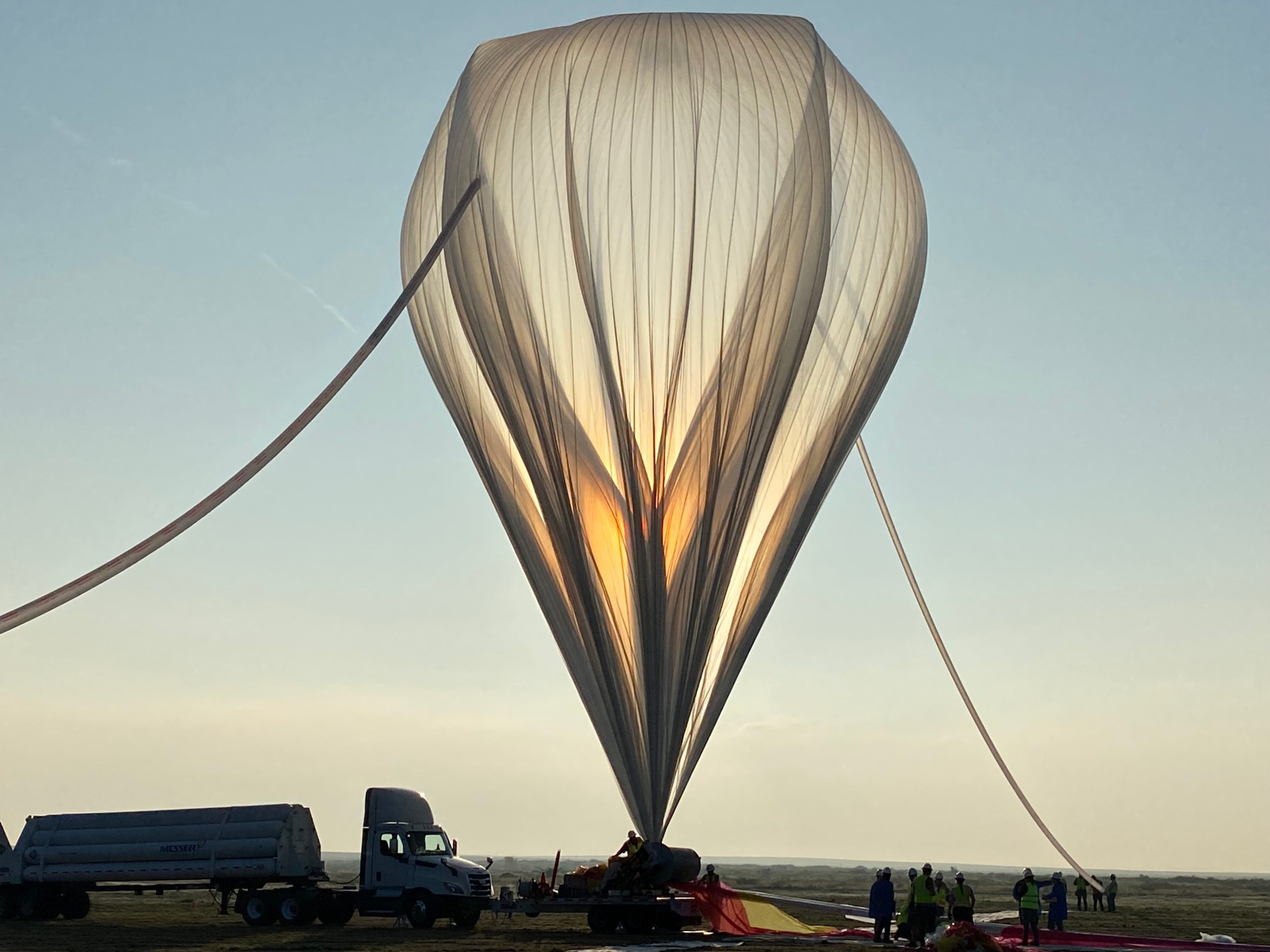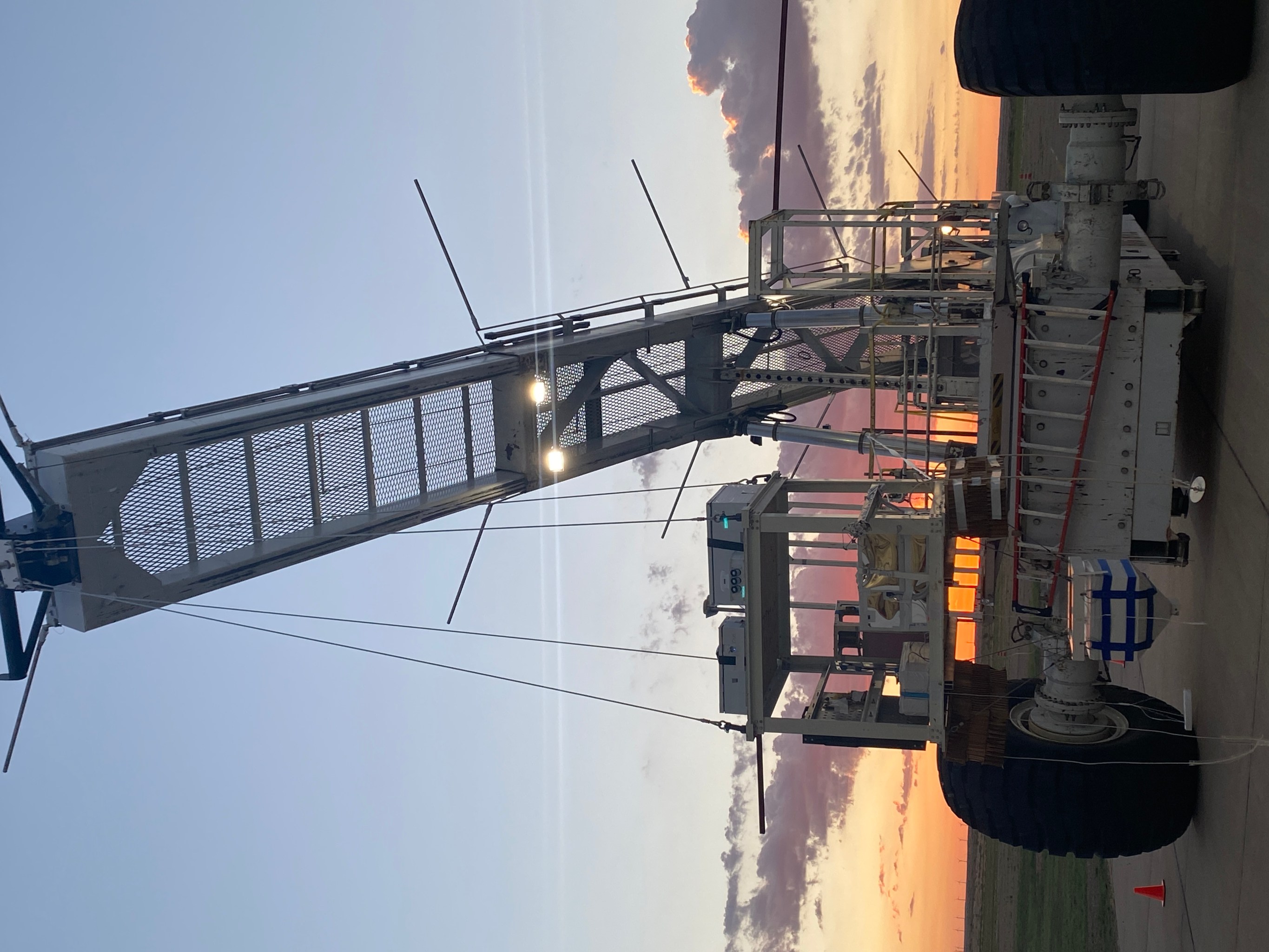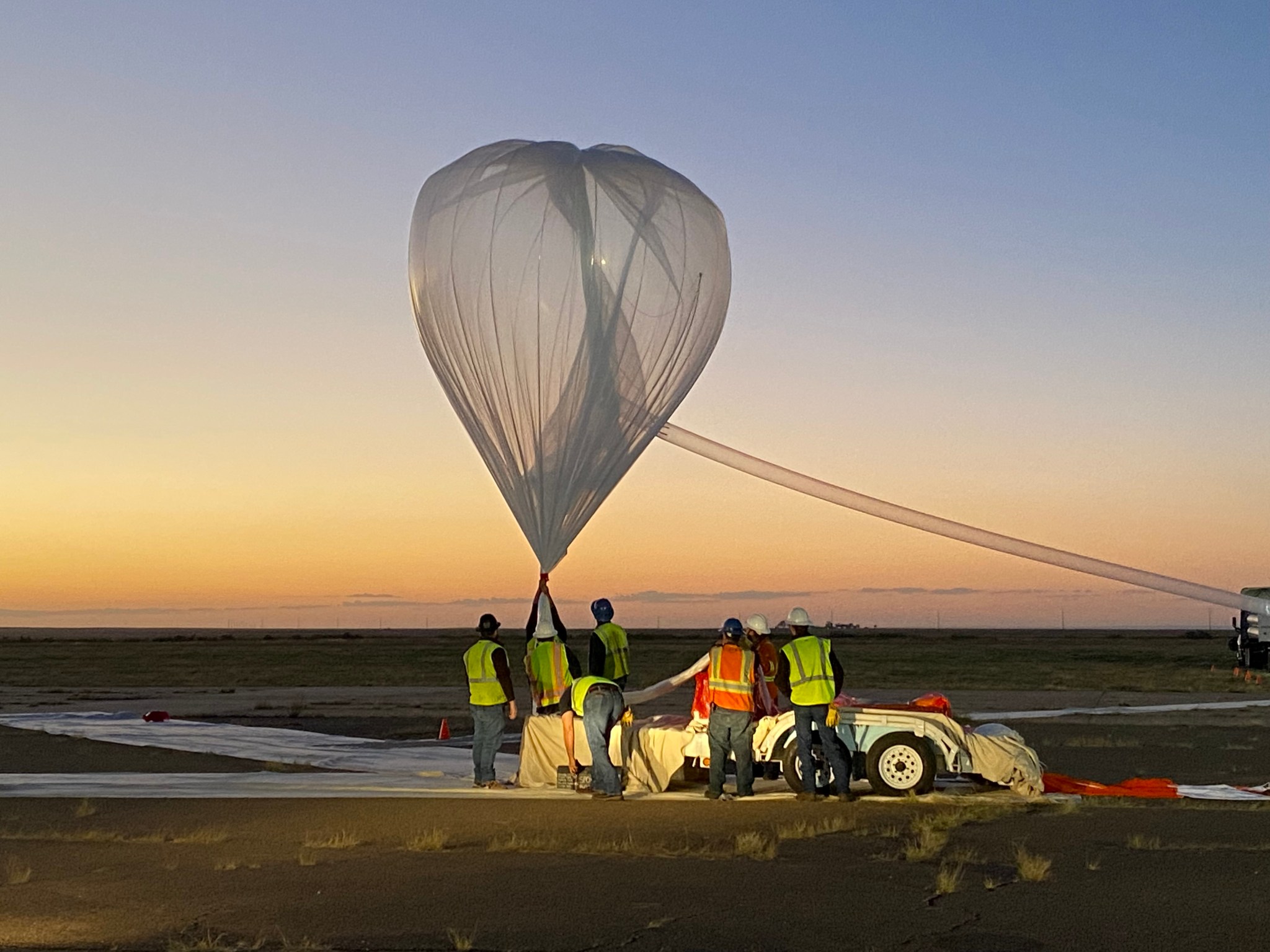PICTURE-C Flight Update: The PICTURE-C mission launched Sept. 28 at 8 a.m. MDT (10 a.m. EDT). The mission met its minimum float and duration requirements before it was safely terminated Sep. 29 east of White Sands, New Mexico. Recovery is in work for the balloon and payload
TinMan Hand-Launch Flight Update 9:30 a.m. EDT, Sep. 26, 2022 The balloon for the TinMan hand-launch flight came down Saturday night/Sunday morning and search operations are in progress to locate the balloon on the ground. There were no reports of any incidents during the balloon’s flight from the Federal Aviation Administration. Also, after recovery of the payload and parachute, it has been determined that the payload did not have an uncontrolled fall upon termination but came down on a “fouled” parachute that did not properly deploy.
TinMan Hand-Launch Flight Update 6 p.m. EDT, Sep. 23, 2022: The balloon for the TinMan hand-launch flight continues floating west of Albuquerque, New Mexico. NASA continues to monitor its progress. The balloon will descend as its helium becomes depleted. NASA continues to provide updates to the Federal Aviation Administration on the balloon’s status. The TinMan payload has been recovered. There were no injuries or property damage resulting from the payload’s free fall. NASA will conduct a safety analysis to determine the cause of the termination anomaly.
TinMan Hand-Launch Flight Update 12:30 p.m. EDT, Sep. 23, 2022: The TinMan hand-launch flight was conducted at 8:40 a.m. EDT (6:40 a.m. MDT), Sep. 22, from Ft. Sumer in New Mexico. The flight was terminated later in the day at 6:15 p.m. EDT (4:15 p.m. MDT). Upon termination, the payload had an uncontrolled fall to the ground and the balloon did not deflate. The payload has been located and recovery is in progress. As of 10:30 a.m. EDT (8:30 a.m. MDT), Sep. 23, the balloon was free flying north northwest of Albuquerque, New Mexico, and drifting slowly north northwest. NASA is providing updates to the Federal Aviation Administration on the balloon’s status.
HASP Flight Update: The HASP mission launched the morning of Sep. 8 and terminated the following morning of Sep. 9. Initial reports from science indicate a successful flight of the student payloads and the HASP support system. The balloon and the payload have been recovered.
BALBOA Flight Update: The BALBOA and piggyback DIMS experiment launched at 10:05 a.m. EDT (8:05 EDT), Sep. 7 with clear skies and low winds. The flight was terminated at 6 p.m. EDT (4 p.m. MDT), Sep. 7. Following the successful flight, the payload and balloon have been recovered.
Mullenax Test Flight Update: The Mullenax Test Flight launched Thursday, Aug. 25. 2022, at 6:55 a.m. MDT (8:55 a.m. EDT). The balloon was at float for 18 hours, 34 minutes, exceeding minimum float duration requirements for both the Mullenax Test Flight and the All-Sky Heliospheric Imager piggyback mission The balloon was recovered Aug. 26 and the payload recovered Aug. 30.
Salter Test Flight Update: The Salter test flight launched Tuesday, Aug. 23, 2022, at 7:36 a.m. MDT (9:36 a.m. EDT) with clear skies and low winds. After a float time of 3 hours and 13 minutes, which exceeded minimum science requirements, the flight was safely terminated over a remote location in New Mexico. The balloon and payload will be recovered in the next few days.
NASA’s Scientific Balloon Program is moving full-steam ahead into the fall 2022 campaign with six scientific, engineering, and student balloon flights supporting 17 missions. The flights are scheduled to launch from Fort Sumner, New Mexico, from mid-August through mid-October.
With one balloon already off the ground, a test flight carrying several different technology payloads and other piggyback missions, the team hopes to launch the five remaining balloons by the end of the launch window in support of multiple science and technology initiatives.
“Our balloon platforms can lift several thousand pounds to the edge of space, allowing for multiple, various scientific instruments, technologies, and education payloads to fly together on one balloon flight,” said Debbie Fairbrother, Scientific Balloon Program chief at NASA’s Wallops Flight Facility in Virginia.
Some of the science missions flying this campaign include the BALloon-Based Observations for sunlit Aurora (BALBOA), testing a wide-view infrared camera designed to study daytime auroras; the Planetary Imaging Concept Testbed Using a Recoverable Experiment – Coronagraph (PICTURE-C) mission that will directly image and characterize dust and debris orbiting nearby stars with the possibility of detecting bright, gas giant planets outside our solar system using a telescope; the TinMan mission hopes to better understand the effects of thermal neutrons in Earth’s atmosphere on aircraft electronics; and the 16th High-Altitude Student Platform (HASP) mission that will fly 12 student-built payloads.
Additionally, the team will support two technology test flights for NASA’s Columbia Scientific Balloon Facility (CSBF), Salter and Mullenax, during the campaign.
To follow the missions in the 2022 Fort Sumner fall campaign, visit NASA’s Columbia Scientific Balloon Facility website for real-time updates of a balloon’s altitude and GPS location during flight.
Most of these missions will fly on NASA heavy-lift, zero-pressure scientific balloons, some of which can be as large as a football stadium when fully inflated. These balloons have open ducts to allow gas to escape, and to prevent the pressure inside the balloon from building up during gas expansion as the balloon rises above Earth’s surface. The duration of this type of balloon is generally limited to only a few days because of gas loss, mostly due to the day/night cycling of the balloon.
NASA’s scientific balloons offer low-cost, near-space access for suspended payloads weighing up to 8,000 pounds to conduct technology demonstration tests as well as scientific investigations in fields such as astrophysics, heliophysics, and atmospheric research. Depending on the goals and objectives of a specific mission, balloon flight durations can run hours to multiple days or weeks for longer-term tests and data collection.
NASA’s Wallops Flight Facility manages the agency’s Scientific Balloon Program with 10 to 15 flights on average each year from launch sites worldwide for the NASA Science Mission Directorate Astrophysics Division. Peraton, which operates NASA’s Columbia Scientific Balloon Facility in Palestine, Texas, provides mission planning, engineering services, and field operations for NASA’s scientific balloon program. CSBF has launched more than 1,700 scientific balloons in the more than 35 years of operation. Aerostar provides fabrication of NASA’s stratospheric balloons.





























